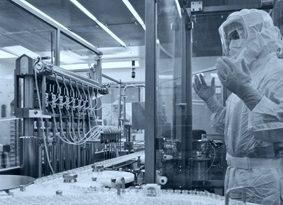USP 797 & USP 800
USP 797 and USP 800 are two important chapters within the United States Pharmacopeia (USP) that provide guidelines for pharmacy practice. Here’s a breakdown of the differences between the two, supported by relevant sources:

Scope: USP 797 establishes standards for the compounding of sterile preparations, focusing on both hazardous and non-hazardous drugs.
Purpose: The primary goal of USP 797 is to ensure patient safety by outlining procedures and practices that minimize the risk of contamination during the compounding process.
Key Areas: USP 797 covers various aspects of sterile compounding, including aseptic technique, facility design and environmental controls, personnel training, quality assurance, and storage and beyond-use dating.
According to an article published in the International Journal of Pharmaceutical Compounding, USP Chapter 797 provides guidance on compounding sterile preparations to protect patient safety and minimize the risk of contamination .
Scope: USP 800 specifically addresses hazardous drugs (HDs) and focuses on their handling, compounding, storage, administration, and disposal.

Purpose: The main objective of USP 800 is to safeguard healthcare workers, patients, and the environment from the potential risks associated with HDs, which can include toxic and carcinogenic effects.
Key Areas: USP 800 covers a range of aspects related to the handling of HDs, including risk assessment, personnel training, facility requirements, personal protective equipment (PPE), environmental controls, spill management, waste segregation, and decontamination procedures.
A publication in the American Journal of Health-System Pharmacy emphasizes the significance of USP 800 in promoting safe practices for handling hazardous drugs and protecting healthcare personnel [2].
It’s important to note that USP standards are periodically updated, and the most current versions of USP 797 and USP 800 should be consulted for precise and up-to-date information.
Sources
Allen LV Jr. (2004). “USP Chapter 797: Pharmaceutical Compounding–Sterile Preparations, Part I https://www.pbm.va.gov/linksotherresources/docs/USP797PharmaceuticalCompoundingSterileCompounding.pdf:
Controlling Occupational Exposure to Hazardous Drugs American Journal of Health-System Pharmacy, 73(22), 1765-1768.
